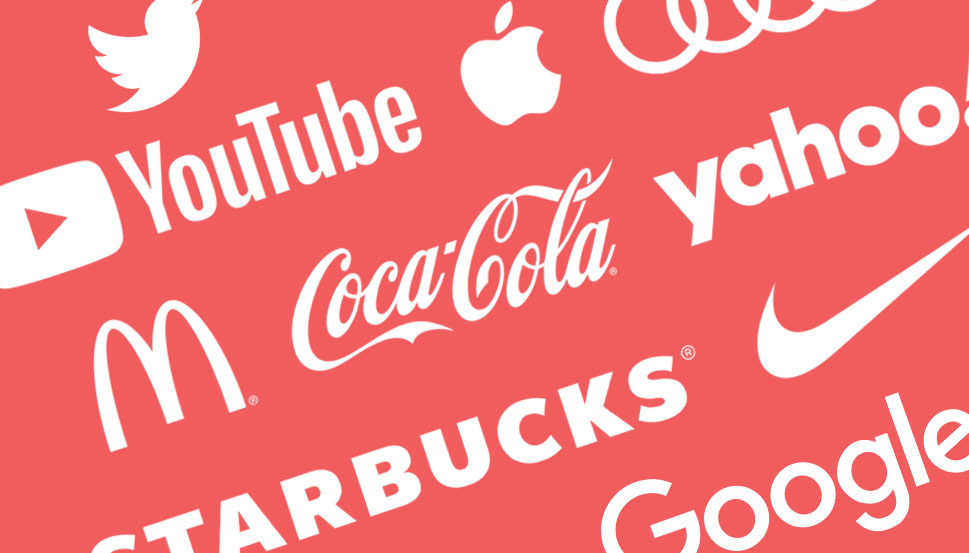A Beginner’s Guide to Neuromarketing

The power of mind-reading is not only a common topic of SF movies but also the everlasting pursuit of many modern sciences, as well as marketers. The human race has managed to crack many codes of the human body, but the secrets of the human mind and emotions are still often elusive. Nevertheless, neuroscience offers many useful insights that are abundantly used in a variety of fields – from medicine and psychology to marketing, for better or for worse. Neuromarketing, or in other words consumer neuroscience, quickly emerged as a special field of study within neuroscience, and it sparked a lot of curiosity both in brands and marketing experts. And, as you can guess, it introduced many controversies as well.
The obvious, yet groundbreaking insight that prompted the development of neuromarketing is the fact that the traditional market research methods only provide us with the answers that consumers are willing to give. And these answers are too often influenced by the consumer’s need to please, give off a certain image, or similar unconscious motivations. The psychology of shopper types gives many clues about how to direct a marketing strategy, but neuroscience seems to be able to provide a lot more precise data about the consumers. By applying knowledge from neuroscience to marketing, neuromarketing aims to provide us with accurate information about the unconscious drives that propel the consumers to make specific decisions regarding their choice of products and brands. Sounds pretty promising, right?
In this article we are going to tackle the exciting field of neuromarketing, offer comprehensive answers to questions like what neuromarketing is exactly, does neuromarketing really work, how does it work and should you use it. Keep on reading to find out more about:

The simplest definition of neuromarketing is that it implies the implementation of neuroscience to marketing. But, since neuroscience itself is a kind of a hybrid science based on a multidisciplinary approach that connects many different fields like physiology, psychology, anatomy, biology, cytology, computer science, and mathematical modeling to explore the nervous system, neuromarketing is also a complex field that spans across many diverse areas.
Neuromarketing started to gain popularity and become a hot topic in the 1990s when the Harward professor Gerald Zaltman launched his Zaltman Metaphor Elicitation Technique. The purpose of this technique was to optimize the sales of advertising. It was based on analyzing the images that provoke a desirable emotional response and lead the consumers to make the purchase. Using emotions to incite a specific reaction in consumers is nothing new for marketers. But, knowing exactly what kind of emotion to target as well as how to provoke it seems a bit on the diabolical side and attracts the attention of all the big players on the market. Therefore, it is not surprising how quickly the field of neuromarketing continued to develop. In 1999, the first tool of neuromarketing emerged – Functional Magnetic Resonance Imaging. But, it wasn’t until 2002 that the term neuromarketing itself began to come into public use.
Nowadays, neuromarketing has many more tools to provide marketers with precise information about their consumers’ emotions, interests, and unconscious motivations. It uses brain activity measurement and biometric technologies to measure a consumer’s response to a specific trigger such as a TV ad, promo banner, chatbots, product placement, CTAs, and other things that are important for marketers. Although many studies proved its usefulness and accuracy, neuromarketing research is pretty pricey and out of reach for many companies.

Neuromarketing experts like to point out that traditional methods of market research such as surveys, focus groups, and similar concentrate on the conscious mind of the consumer while the most important insights lie in the consumer’s unconscious. This fact is often used as the crucial argument for using neuromarketing. Neuroscientists claim that as much as 95% of all our feelings, thoughts, and learning are experienced by our brain before we are actually aware of it. It means that traditional marketing tools can only measure and get to know what happens within the 5% of the consumer’s brain, while the most important processes take place in the unconscious mind. So, why would you set your marketing strategy on the findings based on the 5% percent of your consumer’s mind?
On the other hand, neuromarketing research is still very expensive and the cost/benefit analysis is not so promising at the moment. Many experienced marketers often argue that we don’t really need so much expensive equipment to collect such data about the consumers – it is not that we didn’t know how powerful emotions are in marketing. Maybe consumer psychology and smart tactics can actually keep up with insights provided via neuromarketing techniques.
For now, neuromarketing seems to be the playground for the biggest players on the market. Smaller ones can pick up on its general principles and still be pretty satisfied with the results.

The techniques used in neuromarketing research include fMRI (functional magnetic resonance imaging), EEG (electroencephalogram), eye-tracking (gaze and pupillometry), biometrics, and facial coding. Although all of them require the consent of the participants, the fact that they provide insight into the participant’s unconscious reactions is what still makes them controversial and raises the questions of ethics.
fMRI
Functional magnetic resonance imaging shows the spots in the brain with an increased neural activity using the blood flow as the indicator. It gives very accurate and precise data about the level of engagement, emotional response, and recall of the consumers. Marketers use it for improving brand strategy, pricing, and other aspects of marketing.
fMRI is the technique used in one of the first neuromarketing researches done in cooperation with Coca-Cola and Pepsi. With the goal of establishing which product is better and why, a research team with Read Montague, American neuroscientist and director of the Human Neuroimaging Lab and Computational Psychiatry Unit at the Fralin Biomedical Research Institute as the lead, conducted a blind taste test of Coca-Cola and Pepsi. The blind test is also known as the Pepsi Challenge and was performed in 1975. Participants did not know which brand they were tasting while their neural reactions were measured with fMRI. The results showed that the consumers actually preferred the taste of Pepsi but when they were told which brands they were tasting, they showed a strong preference for Coca-Cola. Based on the data obtained through research, Montague came to the conclusion that the consumers reacted better to Coca-Cola even though Pepsi tasted better because they already formed a strong emotional connection with Coca-Cola thanks to its advertising.
EEG
The EEG (electroencephalogram) technique provides insight into the current emotional state and deep motivation of the consumer. In this technique, EEG headsets are placed onto the participant’s head who is then given some test material like an ad, a TV commercial or similar to watch. The goal of an EEG experiment or research is to establish how much cognitive effort the participant invests in the task, his engagement level, and his motivation to look for the tested product after being exposed to the commercial.
Eye Tracking Technology
Eye-tracking technology uses images and videos that detect precisely where the consumers direct their eyes. This type of research usually requires a pair of eye-tracking glasses if done in a real-world environment or an eye-tracking software platform. It is used primarily for improving packaging and website design as this technology provides insight into what grabs the consumer’s attention. The huge advantage of this technology is that it is not as expensive as other neuromarketing tools and can be done easily.
Biometrics
Biometrics uses measurements of heart rate, respiration, and skin conductance to provide information about the level of engagement. It can also, though not in all cases, provide insight into whether the consumer’s reaction is positive or negative. Facial coding is also used to identify facial expressions and provide information about general emotional responses like whether the consumer feels happy, surprised, scared, sad, and so on. All the data collected this way can be used for improving ad content.
Implicit Association Tests
Implicit association tests include affordable techniques that can be easily conducted in a company of any scope. IAT (implicit association test) examines the underlying emotions, attitudes, values, and beliefs consumers carry towards a specific brand. The methodology is based on a set of descriptors and adjectives that describe a specific concept or experience. The consumers are asked to categorize these statements and the speed at which they do so indicates the perceived strength of association.

Apart from all the research and complex procedures that take both time and money to conduct, neuromarketing also offers some simple, effective approaches that are proven to be very effective in whatever industry you are in. It is also quite possible you are already using some of these principles, but let’s take a quick overview of them from the neuromarketing perspective.
Emotions Over Logic
Even the savviest, the most rational consumers actually make pretty emotionally driven decisions. It is not necessary to know precisely what kind of emotion to appeal to, you can still surely achieve a huge impact on a customer if you emphasize the emotional over the rational benefits of a certain product, provide them the room to connect with your brand emotionally, and indirectly highlight the emotional value of your product/service. This doesn’t mean you shouldn’t emphasize the quality of your products, but that you should also interpret what that quality means for your consumers on an emotional level.
Fear of Missing Out
Creating a sense of urgency due to the short supply or limited-time deal makes your offer tempting even for those customers who are not in real need of it. The fear of missing out is very often stronger than the desire to gain something and, as such, it is a strong motivator for many different shopper types to click the purchase button.
Audio Branding
Just like images, music also communicates with us on a deeply unconscious level and is a powerful tool for achieving brand recognition. An audio logo can be a point of connection between different generations of consumers as the catchy melody lingers in the mind for a long time and later on triggers childhood memories that the adults love to share with their offspring. It is also strong support to your overall brand strategy.
Social Proof
Humans are social creatures and consumers are today more than ever inclined to follow other consumers’ opinions or experiences rather than any ad. Creating testimonials can be a powerful tool for driving attention to your brand in a very natural manner. The fact is that when people see the majority of others buy something they tend to desire it even if they don’t really need it.
The Decoy Effect
By simply offering a consumer an inferior product with higher pricing, you can make the target product look more attractive. Although this approach bears some risks, it is incredible how effective it is.
Anchors
Anchors work as a point of comparison and reference for the consumers. When you provide anchors to consumers you are actually providing them the first set of information about the product that is going to linger in their minds. Translated to marketing tactics, this means for example, you set the price for the specific product higher at first and then lower it, later on, to leverage on an anchoring basis. This way the consumer feels his choice to hit the CTA is justified due to the decrease in price.

The pioneer in this field is definitely Coca – Cola with its blind test experiment where it was determined that consumers actually prefer the taste of Pepsi but only as long as they do not know that they are tasting Pepsi. Nowadays Coca-Cola even has its own neuromarketing lab where they run tests to determine which advertisements are more attractive for consumers.
Hyundai opened the door of the car industry for neuromarketing. With the aim to establish what kind of car design the consumers find most appealing, they ran a few neuromarketing tests measuring neural activity in participants who were asked to look at different parts of their vehicle models.
Facebook explored how its system of ads impacts the perception and emotions of the consumers while the consumers were not even aware that they were actually being tested.
Google based a lot of its SEO algorithms on the neuromarketing findings and is still a great supporter of neuromarketing research.
Thanks to neuromarketing, PayPal determined that consumers actually appreciate speed and convenience of service more than safety which helped them tailor their ads and attract their target group more easily.
The list of companies who invest in neuromarketing research and testing is on the increase, though it seems that this exciting field is still out of reach for smaller players. A lot of the advantage of the results obtained through neuromarketing testing depends on the skill of the researchers to connect and interpret the data accurately.
It often seems ironic that the more advanced the technology gets, the clearer it seems that those who hold the keys to human emotions will have critical leverage in every aspect of life. The marketers who have a deep understanding of the roots of human emotion are those who create magic around brands. The power of neuromarketing lies in the fact that it can provide valid insights into the unconscious content of the consumer’s mind which can then be used both in inbound and outbound marketing strategies.
In spite of its increasing popularity, neuromarketing still isn’t used as widely as one would expect judging from the benefits it promises. This is largely due to the high cost of neuromarketing research, but the moral ambiguity of using it is also something that puts off many marketers. However, big brands like Nestle, Coca-Cola, Hyundai, PayPal, and many others of the similar format have abundantly explored the possibilities of neuromarketing and use it to improve their sales and marketing strategy.



